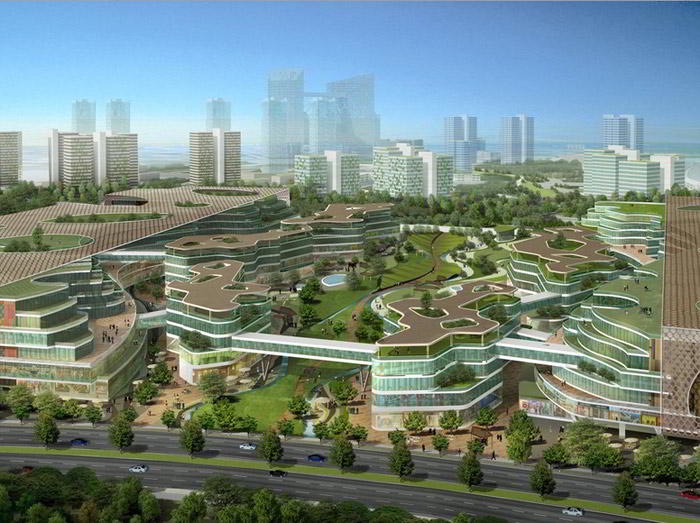
Designed by Surbana Urban Planning Group, the city is being built just 10 minutes away from the business parks at the Tianjin Economic-Development Area, making for a commute that should be a breeze with the development’s advanced light rail transit system.
Home to 350,000 residents, this green metropolis will serve as a model for future Chinese developments and other “eco-cities” around the world. Designed to be practical, replicable and scalable, public housing will be offered to meet the needs of lower to middle income residents, while the number of jobs to be generated within the city are expected to provide for at least half of its locals. Key Performance Indicators (KPIs) will be met in 26 different areas, including air and water quality, preservation of the natural ecology and biodiversity, green building, transportation and renewable energy.
Eco-City will make use of the latest sustainable technologies such as solar power, wind power, rainwater recycling, and wastewater treatment/desalination of sea water. In order to reduce the city’s carbon emissions, residents will be encouraged to use an advanced light rail system, and China has also pledged that 90 percent of traffic within the city will be public transport. The development also features some beautiful public green spaces.
The city will be divided into seven distinct sectors – a Lifescape, an Eco-Valley, a Solarscape, an Urbanscape, a Windscape, an Earthscape and Eco-Corridors. Surrounded by greenery, the Lifescape will consist of a series of soil-topped mounds that will counteract the towering apartment buildings of the other communities. To the north of the Lifescape, the Solarscape will act as the administrative and civic center of the Eco-City. Demonstrating the concept of a compact, multilayered city, the Urbanscape will be the core of the Eco-City, featuring stacked programs interconnected by sky-bridges at multiple levels to make efficient use of vertical space. In contrast to the Urbanscape, the Earthscape will act as a sort of suburb of the city, with stepped architecture that will maximize public green space. Last but not least, the Windscape will transform Qingtuozi, a century-old village surrounded by a small lake, into a venue for citizens to relax and recreate.
The controversial question remaining is whether or not the Key Performance Indicators of the project will be reached under the heavy and increasing pollution in the area, especially considering the majority of some of the most important factories in Beijing have been relocated to Tianjin since 2008. In addition to air quality, water supplies in the area could also be contaminated and the prevalence of certain cancers remain three times higher than in Australian cities and Singapore.
But like most of China and the industrialized world, sustainable development will not come without challenge and the need for innovation. From green spaces to an integrated waste management system and efficient transportation networks in place, the city will produce record low carbon emissions. By the end of the year, the start-up phase of the project (3 sq km) is expected to be completed. Over the next decade, expect to see China continue to completely restructure its image as the world's worst polluting nation to one of the greenest - a phrase many thought they would never hear.
